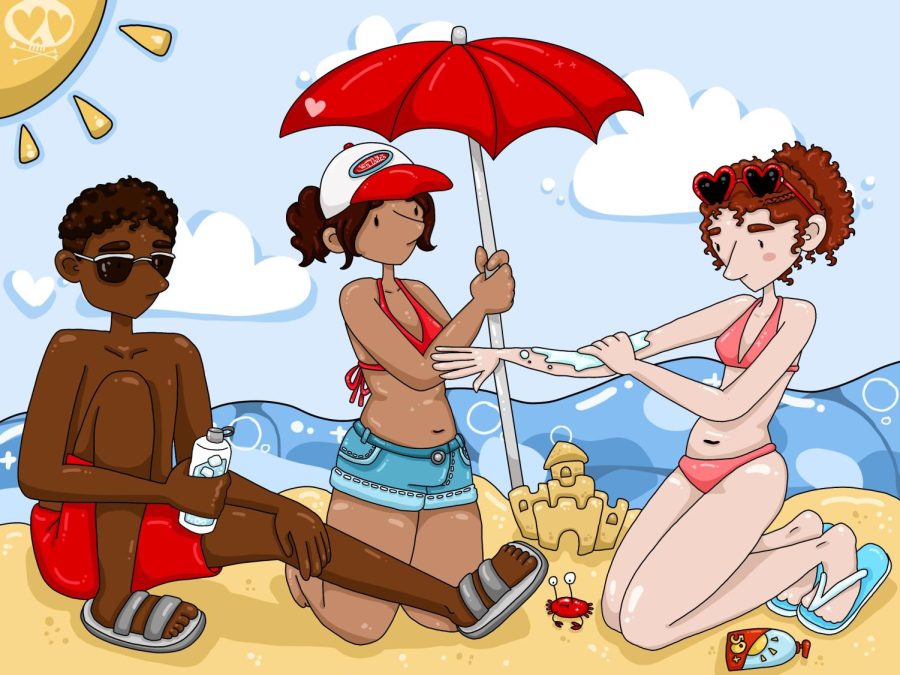Staying safe in the sun
May 10, 2022
The negative health effects of tanning came to the forefront of public concern in the 1980s, as studies were published correlating the use of indoor tanning beds with higher risk of melanoma. Although the frequency of tanning bed use may have faded over time, different forms of tanning remain integral to teens’ lives today. As teens prepare for the summer and spending more time in the sun, they must also consider their safety.
Starting from youth, take sun precautions
As summer break approaches, concerns about sun exposure and its associated risks are returning. Excessive sun exposure is a cumulative issue — even minimal amounts of sun exposure can cause health issues over time. Whether students spend their summers swimming off the rocks at the Point, or sunbathing on the ledge, sun safety is a consideration that needs to be taken now to prevent health issues later.
Students at U-High find it difficult to avoid spending extended periods of time in the sun over the summer, but while they take some precautions and are aware of the associated risks, medical professionals say most people should do more.
“The biggest concern with tanning is skin cancer,” Sarah Stein, a dermatologist at University of Chicago Medicine. “There’s a variety of different types of skin cancer, the most common is a basal cell carcinoma, and those are strongly linked to sun exposure.”
Basal cell carcinomas are the least invasive form of skin cancer.
“Usually basal cell carcinomas are a local problem. They usually just eat away at the skin where they arise, causing deformity and scarring,” Dr. Stein said. “They are usually not a risk for overall health, but in rare situations they can be even more complicated.”
Sun exposure can also lead to more serious cases of skin cancer.
“Melanoma, the most deadly type of skin cancer, is also strongly linked to sun exposure but can also arise without sun exposure,” Dr. Stein said.
These skin cancers, which are often associated with tanning beds after the 1980s, occur just as commonly with natural sun tanning.
“Natural sun exposure and ultraviolet exposure in forms like tanning beds are equally dangerous,” Dr. Stein said.
Different wavelengths of light are responsible for sunburns and skin cancer, yet people are most commonly exposed to both in conjunction.
“There’s a couple different wavelengths of ultraviolet light — UVA and UVB are most relevant,” Dr. Stein said. “UVB is what causes you to get a sunburn, but UVA — which is always right there with it — penetrates more deeply and affects the DNA of your skin cells, which we believe starts the process for skin cancer.”
Although skin cancer typically doesn’t arise as a problem until later in life, Dr. Stein believes that teens should start protecting themselves now.
“The more you’re protecting yourself from ultraviolet light even as a young person, the better you’ll be years down the road,” Dr. Stein said, “because a lot of the damage is being done during childhood.”
People can take many forms of protection, but Dr. Stein suggests physical barriers as the most effective method.
“The best, most effective, safest, most environmentally conscious way to protect ourselves is with clothing, hats, shade, sunglasses, all these physical means of protecting from the sun,” Dr. Stein said. “The sunscreen lotions and creams, we unfortunately never use them as comprehensively as necessary to get protection.”
Some students are aware of these risks, but find them unavoidable.
“I spend a lot of time outside because of rowing,” sophomore Frances Lewis said, “but I feel comfortable because I can take precautions like wearing a long-sleeve SPF shirt.”
Junior Nathan Kilkus, who plays on the baseball team, reaffirmed this sentiment.
“Sometimes I do get sunburnt while playing,” Nathan said. “But I do my best to wear sunscreen during practice and games.”
Sometimes, students spend extended periods of time outside in the summer just to relax. During the coronavirus pandemic, senior Jana Reiser found it easier to spend time with her friends outside during the summer, especially around Promontory Point.
“It’s more convenient to spend time outside because my friend group is too big for us to comfortably hang out indoors without a lot of planning,” Jana said.
Jana gets easily sunburned, so she is sure to take as many precautions as possible while outside.
“I usually just lather myself in sunscreen, and if I go swimming I make sure to reapply often. Sometimes I’ll even wear a long-sleeve swimsuit in order to cover my back, which gets sunburned the most.”
Dr. Stein is confident that the dangers of sun and UV exposure are more well known recently.
“Generally, the population is more aware now than they were 30 or 50 years ago because there is just more talk of it in the press and the public just in general,” Dr. Stein said. “Though I’m not sure that teens or young people are understanding why we need to be protected.”
Sunscreens offer various protections, features
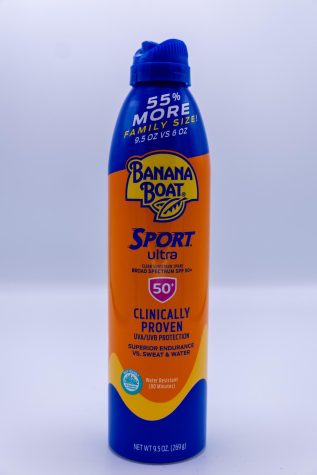
Banana Boat’s Sport Ultra Spray
$12.89 for 9.5 ounces at Target
Banana Boat’s Sport Ultra Spray is available in SPF 15, 30, 50 and 100, providing options for various durations of protection. One of the most noticeable things when using the ultra spray is its strong scent, which smells of sweat mixed with chemicals — a scent that represents a hot summer day. However, the bottle’s nozzle lacks gumption and ability to directly spray a specific patch of skin, instead spraying the skin and into the surrounding air, meaning the user is wasting and inhaling the sunscreen while applying. Once applied, the product feels oily and somewhat greasy. However, the sunscreen is known for its durability and protection when engaging in physically exerting activities.
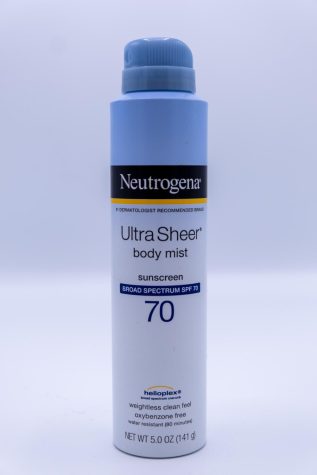
Neutrogena’s Ultra Sheer Body Mist
$11.49 for 5 ounces at Target
Neutrogena’s Ultra Sheer Body Mist is also available in a variety of SPF levels. Neutrogena is branded as being healthier and less-toxic and less prone to causing acne breakouts. The spray nozzle makes it easy for application and provides a firm spray of scuncreen on the directed area. Also, the chemical scent isn’t as potent as other spray options. Once applied, it feels light and rubs into the skin much like a lotion or cream.
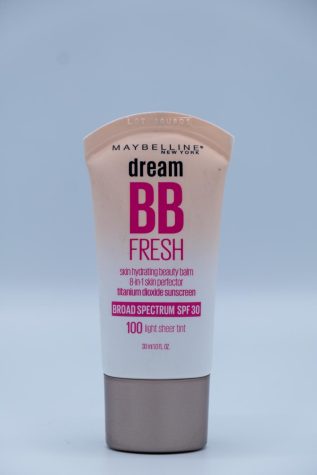
Maybelline’s Dream Fresh BB Skin Cream Perfector
$8.09 for 1 ounce at Ulta
Maybelline’s Dream Fresh BB Skin Cream Perfector is a pigmented cream that contains SPF 30. Its texture and behavior isn’t dissimilar to most liquid-based foundations, with a smooth and easy-to-blend formula. Therefore, it could be easily applied to the neck and face with a foundation brush, beauty blender or your fingers. Its pigmentation as foundation is very sheer and is generally unable to conceal large blemishes and dark spots without the help of another product. Although, the airy, light texture and sheer coverage makes it suitable for minimal sun protection.
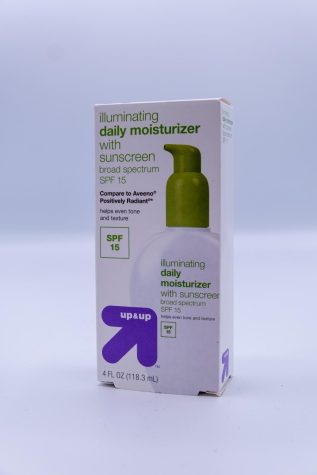
Up & Up’s Illuminating Daily Moisturizer
$10.89 for 4 ounces at Target
Up & Up’s Illuminating Daily Moisturizer is a pump lotion with SPF 15. The texture reflects that of most unscented hand lotions, somewhat sticky at first but soaks in after a few minutes. Once applied, the lotion absorbs into the skin and feels light and not oily, making it perfect as a hand cream or facial lotion. However, the low SPF number makes it unideal to be the only sunscreen applied to the body during a summer’s day.
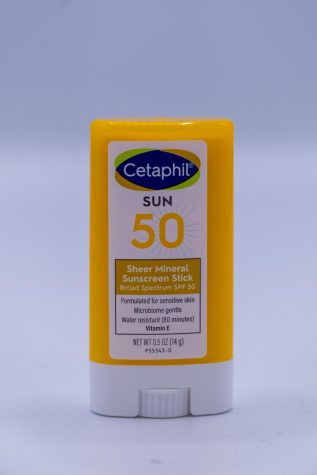
Cetaphil’s Sheer Mineral Sunscreen Stick
$9.99 for 0.5 ounces on Amazon
Cetaphil’s Sheer Mineral Sunscreen Stick is a roll-up SPF 50 sunscreen stick. The roll-up dispenser resembles a large chapstick and the user can drag the stick across their skin while pressing to apply. This method of application is relatively inefficient but does give a mess-free application, unlike the spray options. One of the most noticeable things once applied is the continuous sticky feeling of the sunscreen formula sitting on the skin. Notably, the product doesn’t leave a chemically scented odor and its small size makes it easily portable for reapplication throughout the day.
Quick Q:
What are your experiences with tanning, natural or fake?
 James Morin , junior
James Morin , junior
I was convinced by one of my friends to try tanning because he thought it would make us look better, and you know, I forgot about the fact that sunscreen and water don’t really go well. So, I got obliterated by the sun, and I couldn’t sit down properly and looked a little like the Red Lobster logo. It was a vibe at the time, and I definitely had to use a lot of aloe. It definitely wasn’t one of the greatest experiences ever.
 Ella Hultquist, junior
Ella Hultquist, junior
My routine is on a Thursday or Sunday, I would reapply my tan to let it marinate and wash it off. And it’s really good because it lasts about a week, but I really like doing it because it makes me feel really confident. It’s taken me so long to get used to doing it, because being pale makes me super insecure, but after a while I got the hang of it and now it’s like this super simple and easy thing to make myself feel better.
 Charlie Benton, junior
Charlie Benton, junior
I fake tanned once over the summer before I went on a tropical vacation because I was bored. I used Isle of Paradise tanning drops on my arms and legs and overall it turned out fine. But, it didn’t really look good on me, so I wouldn’t do it again. But by no means do I judge people if they choose to use fake tanner.
 Katie Baffa, senior
Katie Baffa, senior
I used fake tanner when I was a freshman and for a bit of my sophomore year. I thought that it was like a lot of work to apply it to myself, as there was a strict routine you had to follow for like two days in order to make it look authentic. I found that it wasn’t worth it, so I eventually stopped. The issue with fake tan is that once you get used to yourself looking tan you don’t want to go back, and it becomes very expensive and time consuming.
Function & fashion: Clothing provides alternate protection
Whether students are looking for a more eco-friendly sun protection option, or are looking to avoid chemical sunscreen irritants, they can turn to UPF-protective clothing. From garish to glamorous, the market for wearable sun-protection continues to expand and refine itself.
Coolibar
Touting a colorful, modestly preppy array of “sun protection you can wear,” Coolibar’s online catalog is a leading purveyor of UPF 50+ fashion. While, for me at least, their bottoms tend to border on matronly (the shorts they offer hit me right above the knee) Coolibar beachwear undeniably has its merits — not just as wearable sunscreen, but as clothing, too. Granted, it’s the kind of stuff your mom picks out for you during her anti-paraben kick: stiff and patterned, more coverage than the bikinis and sternum-deep necklines you’d wear on spring break. But sometimes I love a good button-down, and if the moisture-wicking fabric and hidden ventilation-panels are any indication, maybe you will too. At $85 apiece, Coolibar’s Women’s Aricia Sun Shirt is no summer break haul-item, but I’ve owned mine since middle school, and, for what it’s worth, it’s kept my shoulders safe.
L.L. Bean
If you’re looking for something less expensive, L.L. Bean’s $25 patterned rash guard might be on your wavelength. No matter your price range, UPF swimwear has to toe a delicate line — the happy medium between function and fashion — and if long sleeves aren’t your thing, you may be out of luck, here. That said, if you intend to while away your summer surfing or kayaking, you won’t look the least bit out of place. For now at least, wearable sun-protection tends to cater to a niche demographic: all-natural granolaheads, people with latex allergies who can’t afford to be aesthetically choosy, and so on. As the market expands, however, so too may the demand for more fashion-forward UPF-wear, ensuring everyone can shield the sun in style.
U.V. Line
Neutral-toned and understated, U.V. Line’s Sun Hat catalog gives us a little more “boho chic” and a little less “Indiana Dunes park-ranger.” The Women’s Juerê, a flexible straw-finished model, comes in brown, black, heather and wheat, so you’ll have no issue matching with a favorite sundress or patterned Havana shirt. Like much of Coolibar’s selection, it’s far from cheap — $54.90 plus shipping and tax — but it’s not the sort of accessory you’ll grow out of any time soon. Like summer itself, straw sun hats are a perennial classic. Durable, style-able and maybe even worth your investment.
